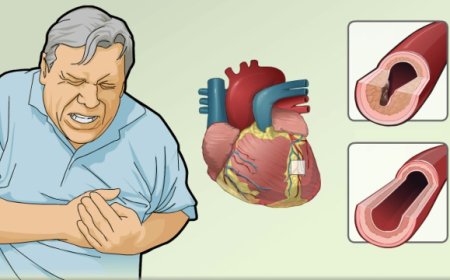Prostate Enlargement BPH

Introduction:
In India, just like in other parts of the world, many men face health challenges as they grow older. One such concern is Prostate Enlargement, also known as Benign Prostatic Hyperplasia (BPH). Let's explore what BPH is, its signs and symptoms, the different types, diagnostic tests, treatments, and prevention techniques, all explained in simple language for 10-year-old children to understand.
What Is Prostate Enlargement BPH?
The prostate is a small, walnut-sized gland that is a part of the male reproductive system. As men age, the prostate may grow bigger, and sometimes it can cause problems. When the prostate becomes too large, it puts pressure on the urethra, which is the tube that carries urine from the bladder out of the body. This can lead to difficulties in urination and other discomforts, a condition known as Benign Prostatic Hyperplasia (BPH).
Signs and Symptoms:
Imagine trying to pee through a narrow straw instead of a wide pipe. That's how it feels for someone with BPH. Here are some signs and symptoms to look out for:
-
Frequent Urination: The person might feel the urge to go to the bathroom more often than usual, especially at night.
-
Difficulty Starting Urination: It becomes tough to begin peeing, and it might take a while to get started.
-
Weak Urine Stream: The flow of urine might be weak, and it may not come out as fast as it used to.
-
Incomplete Emptying: The feeling of not being able to completely empty the bladder after peeing.
-
Dribbling: After finishing, a few drops of urine may leak out involuntarily.
How Is Prostate Enlargement BPH Classified?
Prostate Enlargement BPH can be classified into different stages based on the severity of the condition:
-
Mild: At this stage, the symptoms might not be very bothersome, and the enlargement might not cause significant issues.
-
Moderate: The symptoms become more noticeable, and the person might seek medical advice for relief.
-
Severe: At this stage, the symptoms are quite bothersome and can significantly impact the person's quality of life.
Causes and Triggers:
Although the exact cause of BPH is not fully understood, it is believed to be linked to hormonal changes as men age. The male hormone testosterone, which is important for male characteristics, might play a role in the growth of the prostate. As a result, BPH is more common in older men.
Risk Factors with Examples:
Some factors might increase the risk of developing BPH. Here are some examples:
-
Age: As mentioned earlier, older men are more likely to experience prostate enlargement.
-
Family History: If someone's father or grandfather had BPH, there is a higher chance that they might develop it too.
-
Lifestyle: Unhealthy habits, like not being physically active or eating a lot of unhealthy foods, could increase the risk.
-
Obesity: Being overweight might make BPH more likely to occur.
Types of Prostate Enlargement:
There are two main types of prostate enlargement:
-
Nodular Hyperplasia: This type is characterized by the formation of nodules (small lumps) in the prostate, causing it to enlarge.
-
Diffuse Hyperplasia: In this type, the enlargement occurs uniformly throughout the prostate gland.
Diagnostic Tests and Treatments:
When someone shows signs of BPH, the doctor may recommend several tests to understand the condition better. Here are some common diagnostic tests and their explanations:
-
Digital Rectal Examination (DRE): The doctor uses a gloved finger to feel the prostate through the rectum to check for any abnormalities.
-
Prostate-Specific Antigen (PSA) Test: A blood test to measure the level of PSA, which can help detect prostate issues.
-
Ultrasound: Sound waves are used to create images of the prostate, helping doctors see if it's enlarged.
Treatments:
-
Watchful Waiting: In mild cases, the doctor might monitor the condition without immediate treatment.
-
Medications: Certain medicines can help reduce the size of the prostate or relax the muscles around the bladder to ease urination.
-
Surgery: In severe cases, surgery may be necessary to remove the excess prostate tissue.
Complications of Prostate Enlargement BPH and Prevention Techniques:
If BPH is left untreated, it could lead to complications like urinary tract infections, bladder stones, or kidney problems. To prevent BPH or manage its symptoms, one can follow these simple techniques:
-
Eat a Balanced Diet: Including fruits, vegetables, and whole grains in your diet is essential for a healthy prostate.
-
Stay Active: Regular physical activity can keep your prostate healthy and reduce the risk of BPH.
-
Limit Fluid Intake at Night: Reducing the amount of water you drink before bedtime can help minimize nighttime urination.
-
Avoid Caffeine and Alcohol: These substances can irritate the bladder and worsen BPH symptoms.
Prostate Enlargement BPH is a common concern for many men as they age. It can cause discomfort and disrupt daily life. By recognizing the signs, understanding the types, and following prevention techniques, men in India can take better care of their prostate health and lead a happy and healthy life. Remember, if you ever notice any symptoms, don't hesitate to talk to a doctor who can guide you in managing the condition effectively.
What's Your Reaction?
 Like
0
Like
0
 Dislike
0
Dislike
0
 Love
0
Love
0
 Funny
0
Funny
0
 Angry
0
Angry
0
 Sad
0
Sad
0
 Wow
0
Wow
0








































































